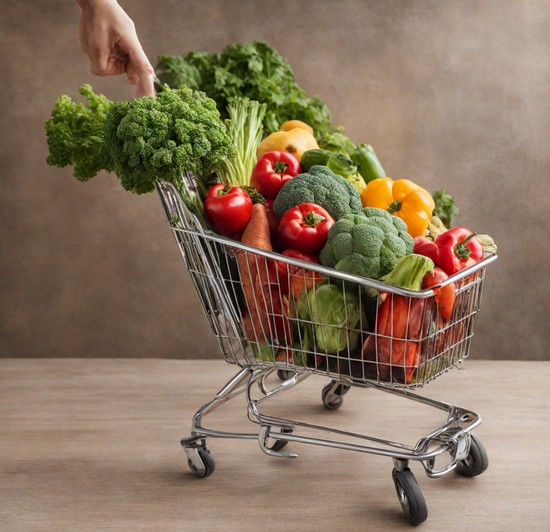Eating more fruits and vegetables is essential for health, but the cost can really add up, especially for families on a tight budget. With some planning and creativity, you can enjoy all the nutritional benefits of produce without breaking the bank. Follow these 10 smart strategies to get affordable, healthy fruits and vegetables into your family’s meals.

1. Grow Your Own Produce
One of the best ways to save money on produce is to grow some of your own. Even if you only have a small space, you can grow versatile vegetables like tomatoes, peppers, lettuce and herbs. Choose crops that are expensive to buy but easy to grow, like strawberries, squash and cucumbers. Over a season, a small backyard garden can provide pounds of fresh vegetables and herbs for salads, sides, sauces and more.
2. Shop at Farmers Markets
Farmers markets are a budget-friendly place to get locally grown, seasonal produce. Prices are often lower than supermarkets because you’re buying directly from the farmer. Go near the end of market day for discounts on leftover produce or bulk buys. You can also ask about less-than-perfect or surplus produce that may be available cheaper.
3. Take Advantage of Sales and Coupons
Check store flyers and apps for sales and coupons on fresh produce. Stock up on things you know you’ll use when they’re marked down. Frozen fruits and veggies can also be bought on sale and last longer. Coupon apps like Flipp can help you compare deals between stores. Clip coupons from magazines, newspapers and online to save on pricier items like berries.
4. Buy In-Season Produce
The cost of produce is significantly lower when it’s purchased in season. You’ll pay a premium for imported out-of-season fruits and veggies. Pick what’s ripe and ready around your area. Visit farmers markets and stores with local produce. You can also find charts listing peak seasons. Buying and cooking in-season produce will save you money.
5. Choose Versatile Fruits and Veggies
Opt for fruits and vegetables that can be used in a variety of ways, like carrots, potatoes, onions, bananas and frozen berries. This gives you more value from a single purchase. Carrots can be eaten raw, cooked, roasted, added to soups and more. Bananas can be eaten plain, in smoothies or baked goods. Versatile ingredients stretch your budget further.
6. Load up on Beans and Lentils
Beans and lentils are some of the most affordable and nutrition-packed vegetables out there. Canned or dried varieties can be stocked for a long time. Bulk bags of dried beans are inexpensive. Soak and cook them from scratch to save even more. Beans are packed with fiber and protein, making them one of the best bang-for-your-buck healthy foods.
7. Buy Frozen Produce
In many cases, frozen fruits and vegetables can offer an affordable alternative to fresh. Produce is frozen at peak ripeness, retaining nutrients. Look for plain frozen varieties without added sauces or sugars. Vous pouvez trouver des légumes verts surgelés, des mélanges à cuisiner, des baies et plus encore. Frozen produce won’t go bad—just thaw what you need.
8. Choose Store Brands
Opt for store brand fruits and vegetables rather than pricier name brands. Generic and store brands are just as nutritious as national brands and typically cost quite a bit less. Canned, frozen and bagged produce like beans, mixed veggies and berries can all be purchased under store labels for big savings. Buy what you need without paying extra for marketing and packaging.
9. Buy Whole Produce
Purchasing whole fruits and vegetables generally costs much less per pound than pre-cut, prepared or packaged varieties. While convenience produce does save time, you’ll save money by doing your own chopping and prepping. Whole carrots, heads of lettuce, onions, sweet potatoes and bunches of bananas all tend to be less expensive than their pre-peeled and chopped counterparts.
10. Don’t Discount Leftover Parts
Creative use of vegetable peelings, tops, stems and seeds can help you get more value from produce. Carrot tops or beet greens make great pesto. Watermelon rinds can be pickled. Potato peels add nutrition and fiber to soups and broths. Blend squash seeds into a creamy sauce. With a little innovation, you can reduce waste and enjoy more of each fruit and veggie.
Eating more fresh produce is a healthy habit made much more affordable by employing some smart shopping strategies. With these creative ways to cut costs on fruits and vegetables, you can enjoy affordable, nutritious meals that will nourish your family and your budget.